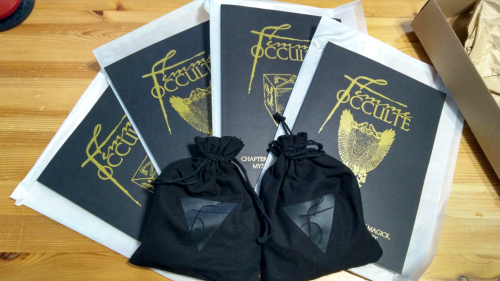#patronage
Megan McIsaac is creating art as a way of life | Patreon
FINALLY MADE MYSELF A PATREON :)
HERE’S MY LIL BIO FOR IT:
Photography has been my greatest passion since childhood. When I was a young girl, growing up near Detroit, Michigan in the 1990’s, I fell wildly in love with making art for and about the people, places, plants, and animals that made me feel some type of way. I have always been a highly sensitive person, and making art helps me process everything I experience. Whether through photography, filmmaking, writing, music, dance or any other creative pursuit, I truly believe that art can help us all confront and transform even our most intense feelings and experiences. Now, living in Los Angeles, I’m working full-time as an in(ter)dependent artist, exploring a wide variety of different mediums and streams of revenue - slowly but surely turning my dreams into reality. I could not do any of this without the overwhelmingly kind support I receive from friends and fans alike, who continuously motivate me to share my work with the world and to just keep going.
As a patron, you’ll receive exclusive access to new projects, seasonal merch, discounts on prints, details on the inner workings of my creative process, and more! I love interacting with my patrons so please feel free to ask questions and start discussions.
You can see more of my work here: www.MeganMcIsaac.com
& if you don’t want to ‘subscribe’ but do still want to show support, you can always buy a print, follow me on social media or send a donation through any of the cash apps here: www.linktr.ee/MeganMcIsaac
Thank you beyond words.
Just arrived from Femme Occulte for a special offer from us both to thank Patrons! Let’s open this package together! #mailcall #patron #patreon #patronage I will be posting a first-come special offer over on Patreon for all Patrons with the contents, so head there for more!
Post link
THREE WOMEN/THREE PATRONS
In stark contrast to ancient Greece, the Romans had no use for the cult of the artist. The native sculptors, painters, mosaicists, and goldsmiths produced copies of Greek works or adapted from Greek sources, were freedmen or slaves whose names are not preserved and whose personal contribution to their work was minimal. When Roman patrons commissioned works from Greek artists (or looted masterpieces by classical artists), those names were often dutifully recorded. Architects were also freedmen, but commanded a little more respect, perhaps because the Romans knew that in this area their architects surpassed Greece in technical ability and iinnovation.
We also know that while the Roman elite recognized and valued high degrees of technical skill workmanship in the artists they patronized, the viewed those manual abilities as inappropriate for members of their own class and looked askance at their social peers who attempted to practice the visual arts. Capable emperors like Hadrian and Julian who took an interest in a manual activities including art, were thought to have degraded the purple in doing so.
Roman art has therefore been largely viewed as the product of an elite patron, who had no direct experience of making art, but whose taste, education, and class informed his/her choices of style, iconography and materials. The work art expresses the patron’s concerns, ambitions, and assumptions, without ever being “expressive” in the psycho-personal, modern sense. Unlike their Greek counterparts, the role of patron in ancient Rome was much more open to women. The following three examples demonstrate the real ways in which privileged Roman women used artistic patronage to assert themselves in the public sphere and to exercise limited, but meaningful, forms of political power.
I. EUMACHIA OF POMPEII
Nearly everything known today about Eumachia stems from epigraphic inscriptions found in Pompeii. The longer of two inscriptions on the building bearing her name adjacent to the Forum identifies her as the priestess of the cult of Venus Pompeiana. The priestess was the sole female member of the city council. Obtaining the position required great wealth and high social rank and the same inscription suggests Eumachia had both: she was the heiress of a successful brick and tile manufacturer and the wife of a patrician duumvir.

In addition to her role as priestess, Eumachia was the patron of Pompeii’s fuller’s guild. In the second decade of the 1st century, she paid for the construction of an enormous elegant building, which served as the meeting place and/or the workshop for the guild. A togate statue representing Eumachia placed in a niche inside the building was donated by the guild in her honor. The inscription also notes that the building was the building was dedicated to Concord and the pax augusta, which indicated that Eumachia wished to be known as a supporter of the imperial government.

Eumachia also commissioned the largest tomb in Pompeii. The elaborate monument exceeded the city’s limits placed on tomb size and surpassed the size of the mausolea of her male colleagues on the council.
II. AGRIPPINA THE ELDER
The daughter of Marcus Agrippa and Augustus’ daughter Julia was married to Germanicus, the most esteemed and capable general in Rome’s history and the adoptive son of Tiberius. After the untimely death of Germanicus, Agrippina actively promoted the sons of Germanicus as potential heirs to Tiberius. In pursuit of this goal, she commissioned one of the most important works of Roman art, the so-called Grand Camée de France.

The largest cameo to survive from antiquity was probably given to Tiberius, who is depicted at the center of the middle register. In the upper register, which signifies the divine realm, the deified Augustus is joined by Drusus and Germanicus. Seated next to Tiberius in the realm of the living is Livia (which dates the cameo to before AD 27). Alsc present are Germanicus and Agrippina with their sons Nero Julius Cæsar, Drusus, and Gaius (Caligula). After the death of their father, the older two boys were adopted by Tiberius. Both were dead by AD 31. Below, captive barbarians served to remind Tiberius of the glorious victories of Germanicus.
Following the example of Augustus, the Julio-Claudians were avid collectors of cameos and intaglios. Agrippina would have been familiar with the most accomplished gem carvers and the works they produced, including the Gemma Augusta. The size, refinement and complexity of the Grand Camée could not have failed to make an impression on Tiberius and Agrippina’s goal was eventually fulfilled: Caligula inherited the throne after the rest of his family, including Agrippina, was exterminated during the ascendancy of Sejanus. The priceless object proves that with access to unlimited resources Roman women could surpass their male counterparts in the commissioning of lavish artworks designed to serve as instruments of political power.
III. GALLA PLACIDIA
Galla Placidia was the daughter of Emperor Theodosius I, the sister of the Emperors Arcadius and Honorius, the mother of Emperor Valentinian III, and the aunt of Emperor Theodosius II. She was given the title Augusta in 421. Galla Placidia, Eudoxia, the wife of Theodosius II, and Pulcheria, the sister of Theodosius II effectively ran the eastern and western empires together during the minorities of Valentinian III and Theodosius II.
As the de facto ruler of the western empire, Galla Placidia engaged in many acts of imperial architecture patronage. She restored the churches of San Paolo fuori le mure in Rome and the Holy Sepulchre in Jerusalem. In Ravenna, she founded the basilica of San Giovanni Evangelista and commissioned the building known today as the Mausoleum of Galla Placidia, which was in fact an Oratory, attached to the narthex of the palace chapel of Santa Croce. After her death in 450, Galla Placidia was buried in the Theodosian family mausoleum in Old Saint Peter’s in Rome. The sarcophagi currently in the oratory, long identified as those of Galla Placidia, Constanius III and Valentinian III, were placed there at a later date.

The interior decoration of the oratory is the product of Galla’s refined tastes and unlimited resources. The mosaic depicting Christ as the Good Shepherd is a masterpiece of Late Antique art, seemlessly combining elements of Greek pastoral imagery, classical figuration, and imperial Roman iconography.

The mosaic representing a saint with a flaming grille was traditionally thought to depict St Lawrence. It has been argued,* however, that this panel represents the Spanish Saint Vincent of Saragossa. Evidence for this theory includes the facts that 1) Galla Placidia had Spanish connections through her first husband, Ataulf, the King of the Visigoths; 2) St. Vincent was martyred by drowning at sea, and Galla had founded San Giovanni Evangelista after she and her children had been delivered from a shipwreck; and 3) Prudentius’s fifth century Passio Sancti Vincent Martyris recounts how Vincent was ordered to disclose his sacred books, so they could be burned. This explains the conspicuous representation of a late antique bookpress, containing the labeled codices of the Gospels, which has no satisfactory explanation in the story of St. Lawrence. This interpretation ties Galla Placidia personally to the mosaic program, proving that female patrons (of this class) had the freedom to commemorate their own experiences and personalize, not just pay for, official monuments.
(*) Mackie, Gillian, “New Light on the So-Called Saint Lawrence Panel at the Mausoleum of Galla Placidia, Ravenna". Gesta 29:1 (1990), 54–60.
How Chitrashala would have originally looked throughout.
Made it into the locked chambers of the Palace, extensively painted inch to inch. The craftsmanship, finesse and refined aesthetic which you witness here is truly remarkable.
#Heritage #Historic #TimeGoneBy #Arts #Narrative #KrishnaInRaas #Gods #Kings #HandPainted #Splendid #Original #IndianAesthetic #Preserved #Arts #BundiCourtPainting #Patronage #PatronsOfArt #Chitrashala #BundiGarh #Bundi #BundiDiaries #BundiJournal #Rajasthan #India #Wanderer #Wanderlust #Travel #Travelogue #TravelDiaries (at Garh Palace)
https://www.instagram.com/p/Bsun0UZHfSj/?utm_source=ig_tumblr_share&igshid=12oze7l1yv57u
Post link



